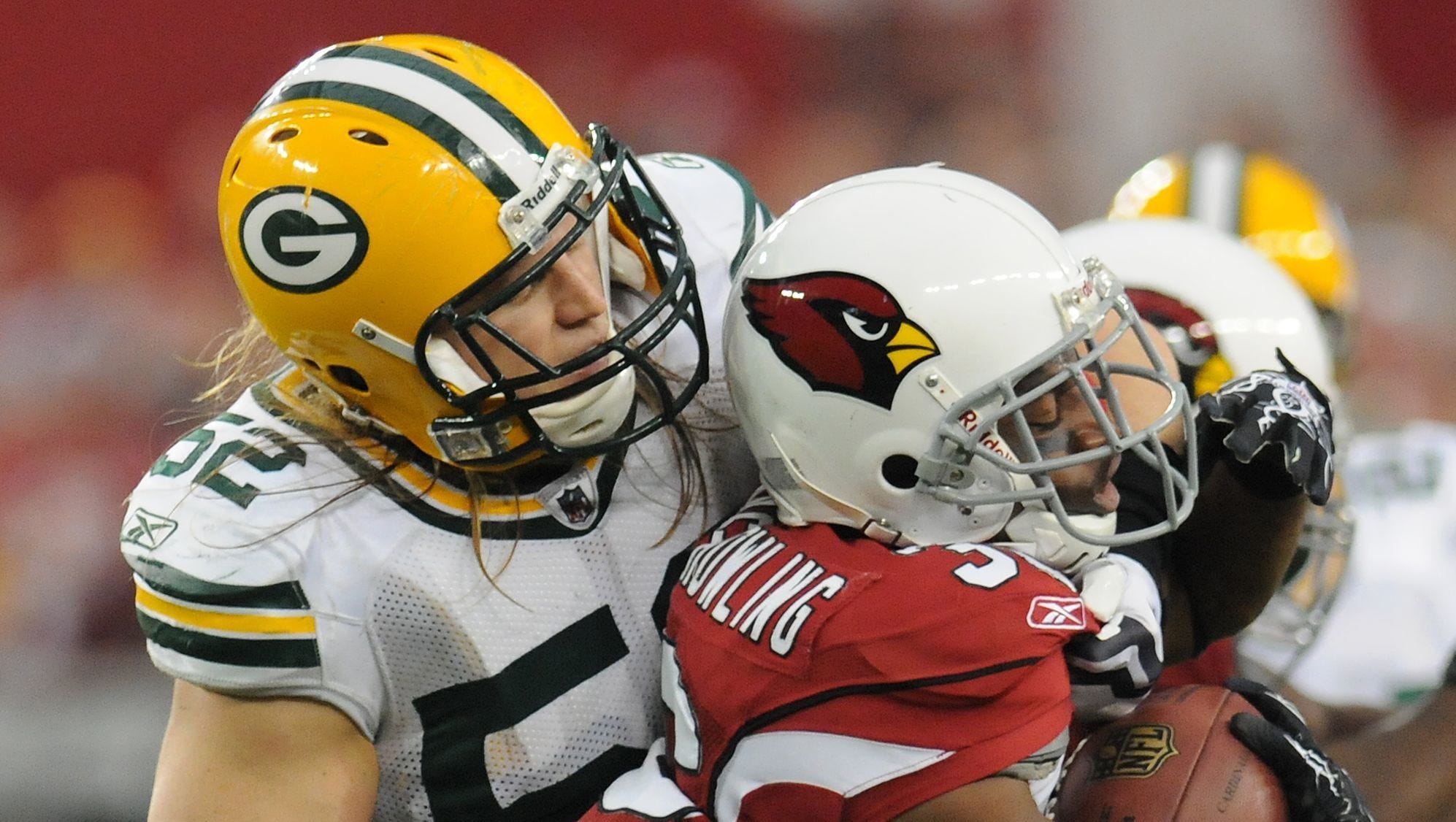Dougherty: Packers send proper message in letting Clay Matthews, Randall Cobb walk
 Pete Dougherty
Pete DoughertyClay Matthews and Randall Cobb are more than deserving of their fine sendoffs.
Matthews was the Packers’ best defensive player for much of his 10-year career, and Cobb was an accomplished slot receiver for an offense that ranks No. 3 in scoring in the NFL during his eight years with the team.
But it was time for the Packers to move on.
Matthews was the bigger star of the two and early in his NFL career looked like he might be on his way to Canton. In his first four years he had three double-digit sacks seasons, one All-Pro selection and went to four Pro Bowls.
An accumulation of injuries, including chronic hamstring strains, prevented him from keeping up that pace. Still, he finishes his career with the Packers as their sacks leader (83½) and will always be remembered for making the fourth-quarter play (a forced fumble) that turned Super Bowl XLV in their favor.
Still, one of the most memorable things about Matthews in my mind isn’t a specific play, game or season, but, of all things, his 10-yard split in the 40-yard dash at the NFL scouting combine. It was mind blowing and tells plenty about why he was dynamic and disruptive in the NFL.

While Matthews’ 40 time of 4.62 seconds was good for an outside linebacker, his 10-yard split of 1.49 seconds was off the charts. Remember, he’s an outside linebacker and weighed 240 at the combine in 2009. Yet that time would have put him in the top 10 percent among cornerbacks dating back to 1999, according to data compiled by Tony Villiotti. Cornerbacks have the fastest average 10-yard split (1.56 seconds) of any position in the NFL.
RELATED: Clay Matthews agrees to deal with Rams
RELATED: Randall Cobb moving on to Cowboys
Put another way, 1.49 seconds ties Matthews for 22nd fastest of all players who have run at the combine since ’99, according to MockDraftable. All the players ahead of him were receivers, running backs and defensive backs. That is stunning.
Matthews’ burst wasn’t the only reason he was a good rusher – his athleticism to get low and torque around the corner was crucial also – but it illustrates how explosive he was whether playing outside linebacker or inside.
Of course, injuries and then age eroded that talent. He had chronic hamstring strains starting his rookie year, plus two broken thumbs and a bad shoulder later. His last double-digit sacks season was 2014, and last year despite playing every game he had a career-low 3½ sacks.
The Packers replaced him when they signed free agents Za’Darius Smith and Preston Smith last week. Re-signing Matthews at age 32 (33 in May) after that would have been a luxury, though it was at least a theoretic possibility.
If the Packers could have gotten him at $4 million or $5 million on a one-year deal to use in a part-time role inside and outside, it might have been worth considering. But he probably would have had trouble stomaching such a big pay cut from his original team. That’s human nature.
Regardless, the NFL Network reported that Matthews’ two-year deal is worth a “max” of $16.75 million. What matters most is how much money he’ll make this year, and the best guess based on those numbers is at least $7 million in 2019, and maybe more.
That’s too much, especially for the Packers, who appear to have less than $10 million left on their cap. While that number includes this year’s draft class, the Packers also like to carry $7 million or so of cap room for in-season moves and contract extensions. They don’t have much left to work with.
Letting Cobb walk was an even easier call.
While he’d been dynamic early in his career and caught 170 passes in 2014 and ’15 combined, the accumulation of injuries caught up with him the last few years, too. His average per catch dropped 3.5 yards from ’14 to ’15, and he was at 10.5 yards or less a catch in each of his final three seasons. Last year he played in only nine games (38 receptions) because of hamstring injuries and a concussion.

Small players – Cobb weighs only 192 pounds – generally don’t withstand the NFL’s pounding as well as bigger guys. That’s just the way it is. Cobb gave his all to the Packers, and they loved his toughness, but it came at a price.
Last year it was a horse apiece on whether to cut Cobb or Jordy Nelson to save cap room – I advocated either cutting Cobb and moving Nelson to the slot, or cutting both. This year Cobb’s departure was a given.
The one-year deal he signed with Dallas on Tuesday will reportedly pay him $5 million. He’ll be 29 in August. Odds are he’ll miss several games and end up with numbers like last season (38 catches, 10.1-yard average).
The question for the Packers is, who will be their primary slot receiver in 2019? One possibility is re-signing Nelson, who was cut by Oakland last week and now is looking for a team. It’s at least worth thinking through.
At age 33 (34 in May), Nelson has lost all his speed but still has size (6-3, 217), excellent route-running skills and an otherworldly chemistry with Aaron Rodgers. Those are good qualities for a slot receiver, even if they’re not typical for a position usually manned by players built like Cobb.
RELATED: Seven memorable moments from Randall Cobb
RELATED: Rodgers quoting 'Shawshank' among Cobb, Matthews tributes
But there are no signs the Packers are interested, and really, they should pass. They need to get faster, not slower. Plus, Nelson can’t play special teams anymore, and he’d be zero threat on the jet sweep, which is an important misdirection play in the Kyle Shanahan-Sean McVay offense that rookie coach Matt LaFleur runs.
Late last season Rodgers named Geronimo Allison as a potential slot even though Allison is a 6-3 long strider. Jake Kumerow (6-4, 209) is much taller than the typical slot, too, but he’s a decent route runner and big target as well, and like Allison would be a lot more dynamic than Nelson at this point.
LaFleur also could line up Davante Adams in the slot occasionally just to make it harder for defenses to zero in on him. And tight end Jimmy Graham could play a slot-type role at times.
GM Brian Gutekunst is a good bet to select a slot receiver/return man in this year’s draft, too. He needs both, though the chances of a rookie playing a big role on offense are slim.
Regardless, Gutekunst was right to graciously thank Matthews and Cobb with public statements Tuesday. Both served his team to their fullest.
He also was right to move on from them.
